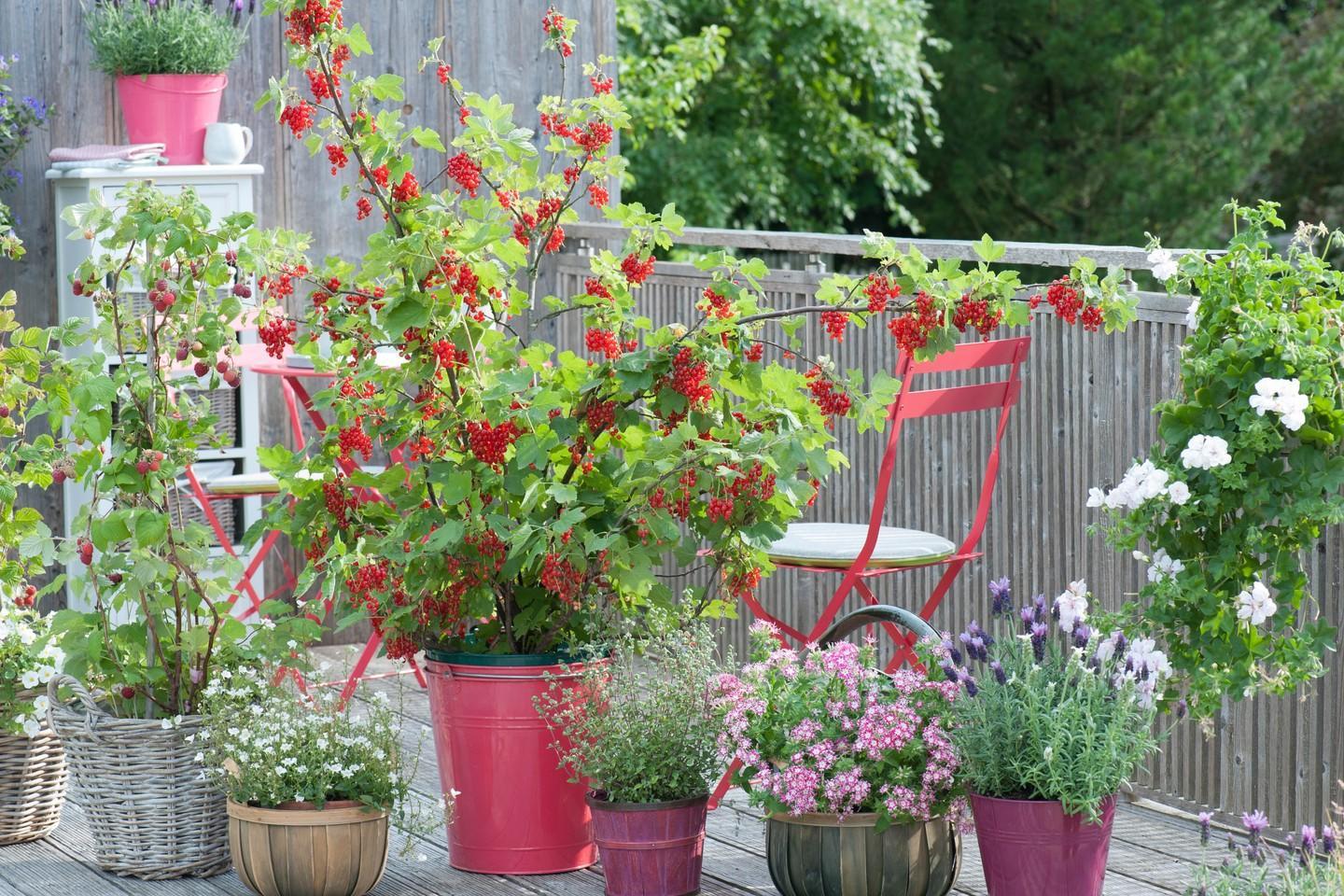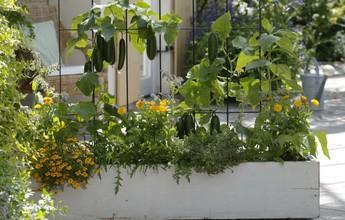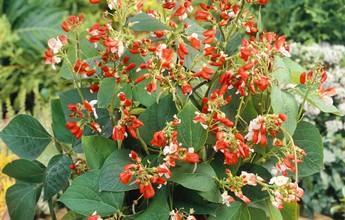
As cottage gardeners grew lettuces amongst the sunflowers and tomatoes alongside the zinnias, so you can include edibles in your summer containers that provide pzazz as well as delicious, home-grown produce. No need to sow from seed if you want instant results: garden centres and nurseries offer large plants of tomatoes, aubergines and peppers: ratatouille, anyone? Give these colourful Mediterranean fruits regular doses of tomato feed for best results. Aubergines have fabulous dusky mauve foliage; play up the purples with an accompaniment of sky blue lobelia to froth around the base of the plant. Both sweet and chilli peppers look the part grown simply in terracotta pots. Cover the compost with decorative grit or gravel that will also help retain moisture.
Trailing and tumbling tomatoes are a doddle to grow and produce masses of small, sweet fruits that are fun to pick straight from the stem: no staking required. Team them with Tagetes marigolds, their aromatic flowers creating shots of gold, and deterring tomatoes’ enemy, whitefly, into the bargain. The tomato’s natural accompaniment, bush basil, looks as good in a container as it does on the plate. Easiest method of ensuring a steady supply is to buy a large pot of supermarket basil, take it out of its plastic pot and gently ease the plant apart to make several sections that can be repotted separately into multi-purpose compost.
A six-pack of strawberry plants will keep you in sweet-scented berries for weeks over summer. Grow them three to a hanging basket or along the edge of a windowbox filled with, for instance, the white daisy flowers of osteospermum, so that their fresh green foliage, white flowers and trailing fruits cascade over the side, making the perfect accompaniment.
Cucumber plants that provide pretty yellow flowers and finger-long, crunchy fruits can be found at garden centres, too, and are surprisingly resilient, even when grown outside. Choose a sunny spot on your balcony or patio and grow one to a large pot, adding a U-shaped cane for the vine to scramble up, over and down again. Callibrachoas – those pretty baby petunias – are the ideal partners to cover the bare compost and tumble over the edges of the container.
Herbs are satisfying to grow and just need sunshine and free-draining compost – mix plenty of grit in with the compost – to keep on trucking through summer and beyond. On a balcony or patio, lavender and rosemary are essential to deliver aromatic and stress-relieving hits. Place them around a seat so they’re within easy stroking distance. Other Mediterranean herbs – bay, thymes, sages and oregano – are as useful as they are decorative and make fine foliage fillers for pots of pelargoniums, verbenas and petunias, relishing the same free-draining, low-watering conditions.


Because so many of us grow our gardens in pots, growers have developed compact varieties of many fruits and vegetables. Runner beans produce gorgeous flowers before the beans appear while dwarf runner bean Hestia, perfect in a pot, and reaching only 45cms high, produces masses of decorative scarlet and white flowers as well as a decent crop of stringless beans. Raspberries and blackberries need no support when they’re dwarf strains that are content in a container. Summer-fruiting raspberry Ruby Beauty is a one-metre high gem that will give you a handful of berries most mornings to add to breakfast meusli, while blackberry Black Cascade, with its thornless, trailing stems, is a sweet-fruited winner for a hanging basket. Redcurrants thrive in a large pot.
Think vertically, too. Sweet peas, with their clinging tendrils, have cottage-garden charm clambering up a trellis, as do sugar snap peas, which have similar, smaller flowers. Choose one or the other – these are two same-family ornamentals and edibles that are best performing solo.
Troughs ranged along the balcony can make great salad bars. Lettuces look picture-book charming growing all in a row, but take one out for a salad, and the perfect symmetry is ruined. A better bet is to grow cut-and-come-again salad mixes that will give you several pickings. Just scatter the seed onto damp compost. Give the container a ruff of nasturtiums – their fat seeds pushed into the compost will grow fast – and scatter the flowers over summer salads for a vibrant, peppery treat.